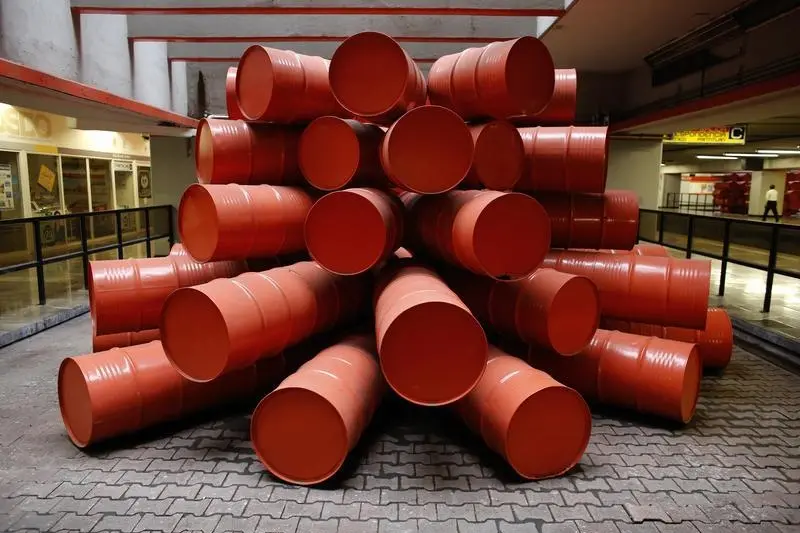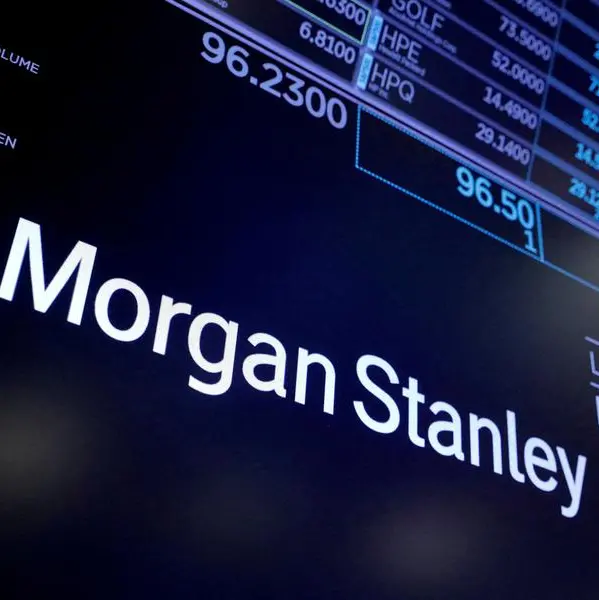PHOTO
- Asian shares fall on weaker China manufacturing data
- Oil prices reverse early gains after witnessing 2018 decline
- Gold prices finish 2018 lower, flat in early 2019 trades
- U.S. dollar gains in 2018 are highest for three years
We would like to wish a Happy New Year to all of our Morning Briefing subscribers.
The new year started on a largely positive note for equities and oil prices, but early gains were then reversed, mirroring the turbulence experienced on markets in the preceding 12-month period as fears linger over the potentially damaging impact of a United States-China trade war.
Global markets
Trading in Asian shares began brightly in early trading on Wednesday, as markets were lifted on hopes of a positive outcome for the ongoing trade talks between the world's two biggest economies, but early gains were quickly wiped off as a purchasing managers' index (PMI) survey indicated that the Chinese manufacturing sector had contracted for the first time in 19 months.
MSCI's broadest index of Asian shares outside Japan fell by 1.1 percent, while the Shanghai index also declined by 1 percent and South Korea's index fell 0.8 percent. Japan's stock market was closed for a public holiday.
An E-mini futures contract for the S&P Index also reversed early gains and was trading 0.2 percent lower.
U.S. stockmarkets had closed higher in thin trading on New Year's Eve, as markets finished 2018 having experienced the worst year for U.S. equities in a decade. Most markets were closed for the New Year's Day holiday on Tuesday.
The S&P 500 index finished the year down 6.2 percent in 2018 and the Dow Jones Industrial Average fell by around 5.8 percent, while the Nasdaq Composite index closed the year 3.9 percent lower. Shares had started the year strongly, before declining in February and then making steady gains until late September, when the U.S. imposed an initial round of sanctions on $200 billion of Chinese goods at a rate of 10 percent, with a threat to escalate this to 25 percent in the New Year. The two sides agreed to enter into talks last month at the G20 meeting in Argentina, but as yet no deal has been reached.
Investors have also been concerned about the U.S. economy slowing at the same time as the Federal Reserve embarks on a monetary tightening policy and continues to raise interest rates.
Thomas Market, a senior portfolio manger at Globalt Investments in Atlanta, told Reuters that "investors got complacent" in 2018 after enjoying years of steady, stable growth in equities markets.
“People were positioned for the lack of volatility, and when that changed because of trade concerns and interest rates, people started repositioning and that started the cascade.”
As the new year begins, “investors will be looking to corporate earnings, what happens with the trade negotiations and the body language of the Fed,” Martin added.
Middle East markets
Most markets were closed for the New Year's Day holiday on Tuesday, but the Saudi Arabian stock market closed 0.4 percent lower on very thin trading volumes. In Oman, the Muscat Securities Market also traded on Tuesday, finishing 0.2 percent higher.
Overall, 2018 was a mixed year for the region's markets, with the Saudi and Kuwait markets benefitting from news of inclusion (or potential inclusion) into emerging market indices compiled by MSCI and FTSE Russell. The Saudi index finished the year 8.3 percent higher and the Kuwait index closed the year 2.3 percent higher, according to Eikon data.
In the United Arab Emirates, it was a mixed year for markets as the Abu Dhabi index closed the year 10.6 percent higher as many of its bank stocks gained in value as interest rates continued to rise. The Dubai Financial Market, on the other hand, endured a torrid 2018 with the index finishing 25.8 percent lower as it was dragged down by the performance of its real estate stocks as concerns grew about an oversupply of new units coming onto the market.
Eikon data showed that market bellwether Emaar Properties closed the year down 37.5 percent, while Damac Properties shares fell by 54.7 percent.
Oil prices
Oil prices made early gains on Wednesday, but subsequently slipped back into negative territory after finishing 2018 around 19 percent lower - its worst performance since 2015. Oil market prices largely tracked equity markets for much of 2018, making gains for most of the year before declining sharply in the final quarter.
As concerns around supply grew following the re-imposition of sanctions on Iran by the U.S., prices peaked at $86.29 per barrel - up almost 30 percent for the year - before declines began on news of waivers for certain states as well as concerns over future demand due to a slowing economy and a ramping up of production by U.S shale producers. Even a deal announced by OPEC and its partners at a meeting in Vienna in December to cut production by 1.2 million barrels per day from the start of 2019 failed to deliver a sufficient bounce.
“Oil prices ... registered their first yearly decline in three years on fears of a slowing global economy and concerns of an ongoing supply glut,” Adeel Minhas, a consultant at Australia’s Rivkin Securities, told Reuters.
In early trading on Wednesday, Brent crude futures gained 51 cents to $54.31 per barrel - up 1 percent on their final close on 2018, but later fell back to 0217 GMT, according to Eikon data.
West Texas Intermediate (WTI) spot crude oil futures also made early gains before falling back by 0.2 percent at 0339 GMT to $45.32 per barrel.
Currencies
The Japanese yen, traditionally seen as a safe haven, gained 0.1 percent against the U.S dollar in early trading on Wednesday, mirroring gains made in the last three weeks of 2018 as investors became more concerned about prospects for the global economy.
Many investors now believe that the U.S. Federal Reserve may have to pause its policy of gradually raising interest rates at the same time as embarking on its policy of quantitative tightening.
“The yen’s main driver over the last few sessions has also been the fall in U.S. yields... [the] market thinks the tightening of financial conditions will make the Fed pause in 2019,” Sim Moh Song, a currency strategist at Bank of Singapore, told Reuters.
The U.S. dollar had made strong gains in 2018 as the Federal Reserve raised interest rates four times over the course of the year, but nervousness among investors about a slowdown in the U.S has caused it to come under pressure in recent weeks. In December, the dollar weakened by around 3.8 percent against the yen and on Wednesday the dollar index, which measures the greenback against a basket of six major currencies, was marginally below Monday's close at 96.08.
Precious metals
Spot gold traded near a six-month peak by 1930 GMT at the end of 2018, at $1,281.25 per troy ounce, having previously climbed as high as $1.284.09 per ounce, recovering from a 20-month low experienced in August as the U.S dollar had continued to strengthen.
The price of spot gold fell back early on Wednesday by $1.86 to $1,280.31 at 00.00 GMT.
(Compiled by Michael Fahy; Editing by Shane McGinley)
(michael.fahy@refinitiv.com)
Our Standards: The Thomson Reuters Trust Principles
Disclaimer: This article is provided for informational purposes only. The content does not provide tax, legal or investment advice or opinion regarding the suitability, value or profitability of any particular security, portfolio or investment strategy. Read our full disclaimer policy here.
© ZAWYA 2019












